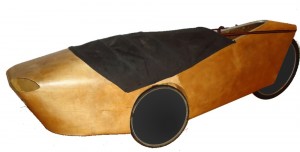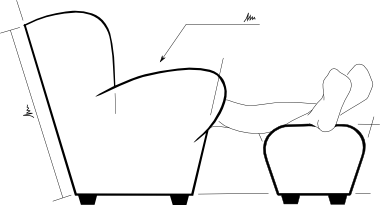On Home-Build Velomobiles
A discussion on ‘BROL about what is needed to expand the velomobile market raised some interesting avenues to explore, including the suggestion of a low-cost, home-built kit that doesn’t need any moulds made, hundreds of hours of finishing and smothing or fibreglass layup, bagging and curing.
A couple of years ago I came across an article that came to a similar conclusion: that a lower cost, simpler velomobile design, which could be constructed at home – ideally open source, so builders were encouraged to experiment and improve – would make velomobiles available to a much wider audience. As I was already following some design ideas along similar lines, the ideas of build-at-home and open source got folded into what is now the Atomic Duck. (I can’t remember the exact source; I believe it was for a Netherlands’ Velomobile Symposium?) Recently, I’ve been glad to see that I’m far from being the only person developing easier-to-construct velomobiles.
This week I saw this post on Recumbent Blog about Titus van den Brink’s Plywood Velomobile (as I was catching up from before Christmas), and the design he’s come up with looks fantastic. As he explains in his second post, using plywood restricts the body shapes he can create (they must be developable), but he’s come up with a great looking, shark-nosed body. It’s clear how the current shape comes from his earlier vehicles, and the holes at the front corners look to be a really good shape and position for light mounts. The overall body shape looks really different from the current crop of composite teardrop bodies, and really shows how the limitiations of a construction material can be used to create more imaginative results.
 Titus van den Brink’s Plywood Velomobile (Image source: Titus van den Brink. Used with permission.)
Titus van den Brink’s Plywood Velomobile (Image source: Titus van den Brink. Used with permission.)
I also came across this topic at ‘BROL before Christmas, about the sale of the second (and final) prototype of Lee Wakefields cloroplast Bulletbike, sadly now an abandoned project. The galleries of the build-up and completed construction are fascinating to look through. It looks like Lee’s used cloroplast for the whole structure, including all the internal stiffeners and the even the top cover connection, by using a sliding top instead of a hinged one; ingenious!
While Lee’s advertisement states the development was halted because “the design has several flaws and lack of interest”, I hope that this is not the last we’ll see of the work that has gone into this intricate trike cover. If nothing else, the design details might inspire someone else, although I’m sure there will be more cloroplast constructions in the future from Lee, as he’s clearly very accomplished.

allan wrote, “I'd definitely be interested in learning what the design flaws were, should you stumble upon them.”